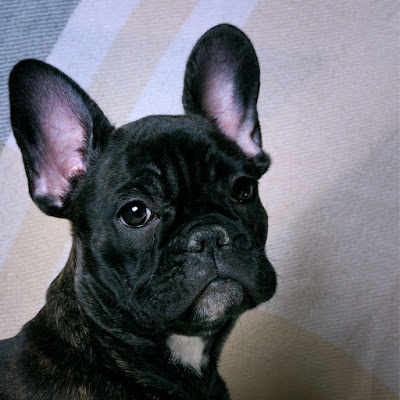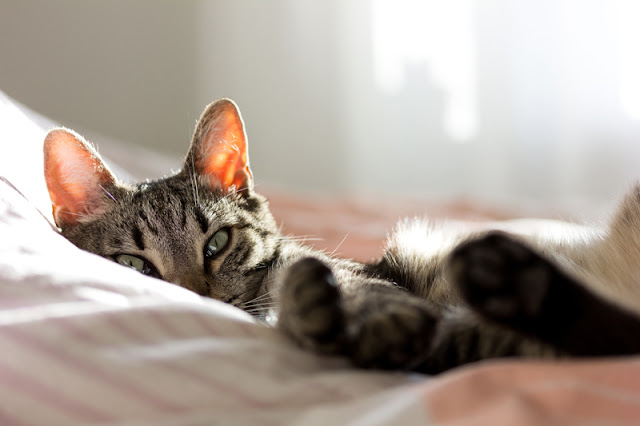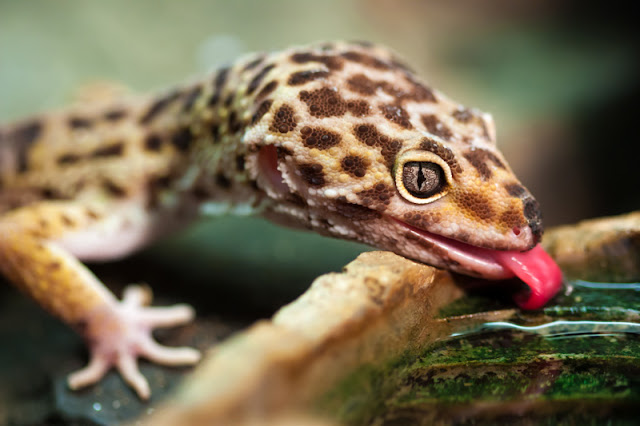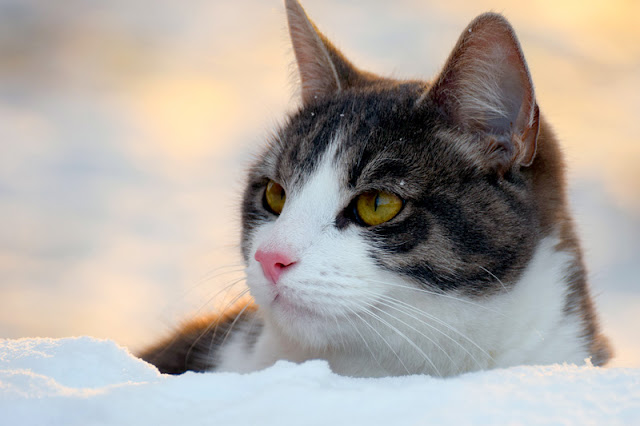 |
| French Bulldog. Photo: Irinia Kozorog/Shutterstock. |
In 2018, French bulldogs became the most popular breed of dog in the UK, overtaking the Labrador retriever, which had the number 1 spot for almost thirty years. French bulldogs are also in the top ten dog breeds in the US (no. 4), Canada (no. 5), and Australia (no. 3).
French bulldogs are lovely dogs but unfortunately they can suffer from a number of inherited conditions, which can be distressing for the dog and heart-breaking for the owner. Because they have a squashed face, they are at risk of Brachycephalic Obstructive Airway Syndrome, can have trouble breathing, be reluctant to exercise, and may overheat in hot weather.
Veterinarian Shaun Oppermann recently told The Guardian,
"We tend to say: ‘Oh, it’s a French bulldog – it’s normal for them to breathe like that. But if your child sounded like that after a walk in the park, you’d have him straight down to A&E [the emergency department].”As well, some French bulldogs have ear problems; eye issues; skin issues; or deformities of the spine as a result of the genes that cause a screw tail.
If you’re thinking of getting a French bulldog but are concerned about their health, here are some suggestions for other breeds that might fit the bill, and some tips if you decide only a French bulldog will do.
People who get French bulldogs are often first time dog owners who choose the breed because of its distinctive appearance and personality.
I reached out to some experts to ask which breed they would recommend as an alternative to someone thinking about a French bulldog. In other words, breeds that are suitable for first time dog owners, good with families, suitable for apartment living, don’t need too much exercise, and have a great personality.
Choosing the breed isn’t the most important thing
Although breed is the thing most people think about when getting a dog, other considerations are more important, such as whether it’s the right time for you to get a dog.
Veterinarian Dr. Emma Milne, author of Picking a Pedigree: How to Choose a Healthy Puppy or Kitten
“My advice for first time dog owners would be to totally forget about whatever breed they think they want! Every single prospective dog owner should go for a minimum of half an hour’s walk twice a day every single day for a month regardless of weather. Millions of dogs get no exercise and this task is harder than you think. Research is key. Talk to a vet, not just breed clubs, it’s us that see the breed diseases. Make sure the dog suits your life and learn about socialization and habituation.
“As for which breed I champion - the good old mutt. A true cross breed. Temperament and health are WAY more important than looks.”
Dog trainer Kristi Benson, CTC, says,
“consider what it is about Frenchies that you like, and see what other breeds might also have that characteristic.”
These are the breeds recommended as especially suitable for people who love French bulldogs.
Border terrier and other terriers
 |
| Border Terrier. Photo: Radomir Rezny/Shutterstock |
The border terrier and other terriers are all great choices.
Dog trainer and qualified groomer Amy Terceira, CTC, of Dog Gone Good says, “Looking for a fun loving breed? Consider a border terrier, West Highland terrier or a Norwich or Norfolk terrier."
She says. "These breeds are hearty and don't have loads of health issues. They are affectionate and enjoy the company of the family. These terriers can live happily in apartments as long as they get daily walks and their moderate exercise requirements are met. They have lovely, spunky personalities and loads of motivation which helps for training initiatives. The border terrier in particular is not known to excessively bark unless their needs are not being met. They are brave, confident little dogs.
“They have moderate grooming requirements which some owners prefer to a breed that has considerable grooming needs. Preferably, they are hand stripped but can be brushed or clipped as well. Their coats do not mat as easily as a poodle or Labradoodle for example. Hand stripping removes the dead rough outer coat to allow a fresh wire coat to grow in.
“The border terrier, in particular, is wonderful in the house and can chill out for long periods of time but does need to be walked daily.
“I would caution potential owners that these breeds have high prey drives and love to chase critters, which is what they were bred to do! Walking them on leash especially near roads is wise. Installing a strong recall is a good idea too. They aren't the best candidates to live with cats, especially in an apartment.
 |
| West Highland White Terrier puppies. Photo: Olga Ovcharenko/Shutterstock |
“Another thing to note about these terriers is that they are choosy about their doggie friends. Socializing them from an early age is very important but despite your best socialisation efforts, they may still be scrappy and not get along with every dog they meet. Terrier breeds tend to be less tolerant of forward advances by other dogs.
“If you like what you are reading but would prefer something a little less spunky or spiky try a Sealyham terrier or a Dandie Dinmont.”
Cairn Terrier
 |
| Cairn Terrier. Photo: Marina Plevako/Shutterstock |
Cairn terriers are little dogs that are generally healthy; indeed, I suggested them in a post I wrote for Psychology Today about the #BreedtoBreathe campaign on brachycephalic dogs.
Dog trainer Eileen Holst-Grubbe, CTC, of Great Day Dog Training says, “While not usually thought of as a first-time-dog-owner dog, the cairn terrier has the personality someone looking at a Frenchie could be attracted to. They have the terrier spunk that might make a novice owner think twice, but I’ve found that with some training (a good professional is the best bet) and other mental enrichment their zest for life can be channeled appropriately. While they are busy little dogs, they have short legs and I've found it doesn't take as much physical activity to tire them out.”
Holst-Grubbe has a personal reason for loving the cairn terrier. She told me, “Oscar was the cairn in my life and he, as well as the few I have trained, all seem to have a sense of humor. “
She added, “Their terrier spiciness might outwit the average person (or dog), but the few cairns I have trained for clients have been quick learners and able to become well-behaved, yet entertaining, members of their families."
Golden retrievers and Labrador retrievers
 |
| Golden Retriever puppy. Photo: PhotoTrippingAmerica/Shutterstock |
Golden retrievers and Labrador retrievers need no introduction because they are such popular dogs.
Tim Steele, CTC, of Behavior Matters Academy says, “I realize it may sound trite, but I'd recommend people look at Labrador and golden retrievers. There are good reasons these dogs end up on the most popular lists every year (the Labrador retriever comes in first and goldens come in third out of 193 breeds at AKC.org).
“They are generally friendly, good family dogs, easily trained, and fantastic for people with active lifestyles. You couldn't ask for a better hiking buddy who will love cuddling with you when you get back home.”
Havanese
 |
| Havanese puppy. Photo: Dorrotya Mathe/Shutterstock |
Havanese are toy dogs that are originate from Cuba, hence the name.
Bonnie Hartney, CTC, of Ocean Park Dog Training suggests the Havanese. She says, “As a professional dog trainer, I spend time with a variety of breeds and mixes. One little dog that has won my heart is the Havanese. They are cheerful, affectionate companion dogs, well-suited to apartment living. Friendly with people, children, and other dogs, the Havanese are popular on neighbourhood walks. They excel in dog sports such as agility, nose work, and obedience but are also content to hang out with their “people.”
“Like the French bulldog, Havanese are relatively quiet. Their beautiful silky coats, which come in a variety of colours and patterns, require brushing or clipping. Whether in a selfie pose or with a new trick, the Havanese are definite people pleasers.”
Italian greyhound
 |
| Italian Greyhound. Photo: Sarah Weldon/Shutterstock |
Italian greyhounds are small, elegant sighthounds that are often called Iggies for short.
Certified dog behavior consultant Kayla Fratt, CDBC, of Journey Dog Training told me Italian greyhounds are apartment-friendly dogs that are healthy and don’t need much exercise.
She says, “Italian greyhounds are notoriously quiet and cuddly. They’re even smaller than Frenchies and often look adorable in sweaters (they get very cold). They’re really nice, easy dogs. Plus, they come in a lot of colors and can still be quite striking.
“Let’s face it, many people love Frenchies because they’re so darn cute. Iggies (Italian greyhounds) also fit that bill!“
Poodle
 |
| Toy poodle. Photo: Jagodka/Shutterstock |
Poodles come in standard, miniature, and toy sizes and are intelligent dogs.
Dog trainer and canine behavior consultant Melanie Ceronie, PhD, says “For individuals or families thinking about a Frenchie or other brachycephalic breed of dog, I highly recommend considering a poodle as an alternative. There’s much more to a poodle than just a pretty face! Poodles are consistently in the AKC’s top 10 list of most popular dogs in the United States. They are active, highly intelligent, and friendly dogs that make great family companions.
“With three varieties of poodles to choose from – toy (4-6 pounds); miniature (12-20 pounds); and standard (50-70 pounds) – there is a size suitable for everyone. Poodles also come in a wide range of colors, including grey, apricot, black, and white. Poodles are highly trainable dogs that make a great choice for people wishing to participate in dog sports, such as agility, freestyle, nosework, or competition obedience. They are also known to make wonderful therapy and service dogs, as well, due to their friendliness, intelligence, and trainability.
“Because poodles are active dogs, it will be important for those considering the breed to ensure that their dog’s daily exercise and enrichment needs are met. In addition their curly coats require regular brushing and grooming. There's a lot to love about poodles, and I highly recommend them to individuals and families looking for a sociable, active canine companion.”
Shih Tzu
 |
| Shih Tzu. Photo: rebeccaashworth/Shutterstock |
Shih Tzus are popular little dogs because of their playful nature.
Dog trainer Jennifer Gailis, CTC, of Bravo Fido says, “If I had to sum up the Shih Tzu in a few words, it would be happy-go-lucky and playful. The Shih Tzu is easily overlooked as a frou-frou show dog best suited to sit on a fluffy pillow with a bow in their hair but this couldn’t be further from the truth. These are generally playful little dogs with wonderful personalities. Their exercise needs are low compared to working breeds, however, they still need daily activities and play.
“As with any breed, finding a responsible breeder, early socialization, and positive reinforcement training are key to ensuring your Shih Tzu is happy and confident. Shih Tzus are generally extremely social dogs and can make wonderful companions for people of any age. They can be lovely with children and make good family dogs. However, due to the Shih Tzu’s small size, rough handling or overly boisterous kids can be scary. Parental supervision is always recommended.
“The main drawback to the Shih Tzu is their coat which requires regular grooming. Most pet owners choose to give their Shih Tzu a close-cropped puppy cut which gives them an adorable rough and tumble look.
“Shih Tzus make my list of dog breeds recommended for novice owners or anyone looking for a lovely companion. While the breed is recognized for many wonderful traits, please remember all dogs are individuals and there can be variation within the breed.”
This is a brachycephalic breed, so take extra care to find a responsible breeder.
Whippet
 |
| Whippet. Photo: Cora Mueller/Shutterstock |
Whippets are good-looking dogs that are taller than Italian greyhounds but smaller than greyhounds.
Dr. Kate Mornement of Pets Behaving Badly–Solutions with Dr Kate told me, "Whippets are a fantastic breed for so many reasons. They are friendly, affectionate, intelligent, compatible with other pets and usually don't bark excessively. They are also very clean and have a low shedding, low maintenance coat. These qualities make them well suited to apartment living (as long as they are adequately exercised).
“Whippets make great companions for most people and living situations including families and are said to be one of the hardiest purebred dogs. Whippets feel the cold, though, and may need an extra layer to keep them warm in the winter months. These lovely little dogs do best when they are allowed inside and included in family life."
Mutts
 |
| Mixed breed dog. Photo: Lunia/Shutterstock |
Mutts are very popular for a variety of reasons, and by definition come in all shapes and colours.
Monash University PhD candidate Mia Cobb of Do You Believe in Dog? recommends a mixed breed dog.
“You want to share your life with a healthy and happy canine companion for as long as possible, yes? Then get a mutt!," she told me. "I’m a huge fan of welcoming rescue dogs of unknown heritage into my home. Perhaps you’re concerned that a mutt won’t behave as predictably as a pure-bred dog, but research from the last two decades repeatedly shows us that we need to treat dogs as individuals. We can see as much behavioural variation within a breed as we can between breeds. We can’t be certain that dogs will behave a certain way just because they belong to a specific breed or breed type."
There are advantages to a mixed breed dog, Cobb says. "Mixed breed dogs live longer than pure bred dogs, and this lifespan advantage is proportional to body size. We know that dogs with squashed (brachycephalic) faces lead lives of compromised health and welfare. If the goal is a happy, healthy and long-lived dog - it’s not going to be one with an extreme body type – it’s really that simple.
"Whichever type of dog you decide to share your home with, be sure to meet the specific individual. I’d advise spending time getting to know them, their personality and activity levels. Do your research to be informed of any breed-related health issues they will face throughout their lifetime - then consider whether you will be a good fit for each other over the next fifteen years. Me? I’ll always be meeting my next mutt at the rescue shelter.”
Kristi Benson says an adult rescue dog has the advantage of being a known quantity. She told me, “Rescues and shelters in your area will likely have a bevy of mid-sized dogs who are fun, hilarious, and with the same amount of energy as a typical Frenchie.
"Plan to do meet and greets with dogs that are at least three years old, since once a dog is about three, they pretty much are who they are: they will be dog-friendly or not, cat-friendly or not, kid-friendly or not, and you can easily identify both their exercise and grooming needs.”
If you really want a French bulldog
Whatever breed of dog you get, research the health issues so you can ask the breeder the right questions.
If you want a French bulldog, it’s important to find a responsible breeder. Ask them whether the parents have needed any medical procedures; a good breeder will be happy to talk about the health of their puppies. Dogs that have had to have surgery for Brachycephalic Obstructive Airway Syndrome should not be bred from. Make sure you see the puppy with mom, and pay attention to whether the mom seems healthy or is snorting or wheezing.
Ask the breeder if the puppies were born by caesarian section, and if the mom has had multiple caesarians. In some breeds, including the French bulldog, the majority of litters are born by caesarian section because they cannot safely give birth naturally. In some places, guidelines or legislation mean bitches can no longer be bred if they have had two caesarian sections.
Benson says “Check with the Frenchie breeders in your area for any who are breeding for longer snouts (and to address the other conformation issues with these dogs). Supporting these breeders will support changes in the breed standard, which is what many dog advocates are seeking.”
Benson also suggests that you consider a cross of a French bulldog with another breed. “Search the rescues and shelters in your area for Frenchie crosses. Crosses often share characteristics with their parent breeds, but can be healthier and more structurally sound.“
Remember that French bulldogs are also available from shelters and rescues. In this case you get the advantage of their health having already been checked – and any necessary veterinary procedures having been carried out. Plus, of course, you are giving a home to a dog who badly needs one.
The video below shows what the Mayhew animal welfare charity in London, UK, did for one of the French bulldogs that came into their care.
Summary: French bulldogs and alternatives
French bulldogs are wonderful dogs, but they can have serious health issues as a result of their looks. Ultimately, we need kennel clubs and breeders to find a way to solve this problem (for example, in Sweden, dogs that have had surgery for brachycephalic issues cannot be bred).
If you want a dog like a French bulldog, the breeds listed in this post are all great choices for people who love Frenchies, as are mutts. It’s important to remember that French bulldogs are available in shelters and rescues too.
Whatever breed you decide on, remember to research the potential health issues so that you know which questions to ask the breeder, and always see the puppy with mom. Check out my post on how to choose a puppy for more tips.
And if you’re getting a puppy, don’t forget to sign up for a good puppy class (see also: how to choose a dog trainer).
Join over 2,500 animal science enthusiasts and subscribe to Companion Animal Psychology.
Further Reading
Why do people choose certain dogs (here on Companion Animal Psychology)
‘This is a calamity’: The surgeons keeping pugs and bulldogs alive by Simon Usborne at The Guardian.
Dogs deserve better (RSPCA)
Veterinarian Dr. Emma Milne has a page about the responsible use of pets in advertising (and you’ll find lots of animal welfare info on her website too).
What the pug is going on? by Mia Cobb, Do You Believe in Dog
References
Evans, K. M., & Adams, V. J. (2010). Proportion of litters of purebred dogs born by caesarean section. Journal of Small Animal Practice, 51(2), 113-118. https://doi.org/10.1111/j.1748-5827.2009.00902.x
Fawcett, A., Barrs, V., Awad, M., Child, G., Brunel, L., Mooney, E., Martinez-Taboada, F., McDonald, B. & McGreevy, P. (2019). Consequences and Management of Canine Brachycephaly in Veterinary Practice: Perspectives from Australian Veterinarians and Veterinary Specialists. Animals, 9(1), 3. https://doi.org/10.3390/ani9010003Packer, R. M. A., Murphy, D., & Farnworth, M. J. (2017). Purchasing popular purebreds: investigating the influence of breed-type on the pre-purchase motivations and behaviour of dog owners. Animal Welfare 26(2), 181-201.
Sandøe P, Kondrup SV,, Bennett PC,, Forkman B,, Meyer I,, Proschowsky HF,, Serpell, JA,, & Lund, TB (2017). Why do people buy dogs with potential welfare problems related to extreme conformation and inherited disease? A representative study of Danish owners of four small dog breeds. PLOSOne https://doi.org/10.1371/journal.pone.0172091
As an Amazon Associate I earn from qualifying purchases. As an Etsy affiliate, I earn from qualifying Etsy purchases.




































